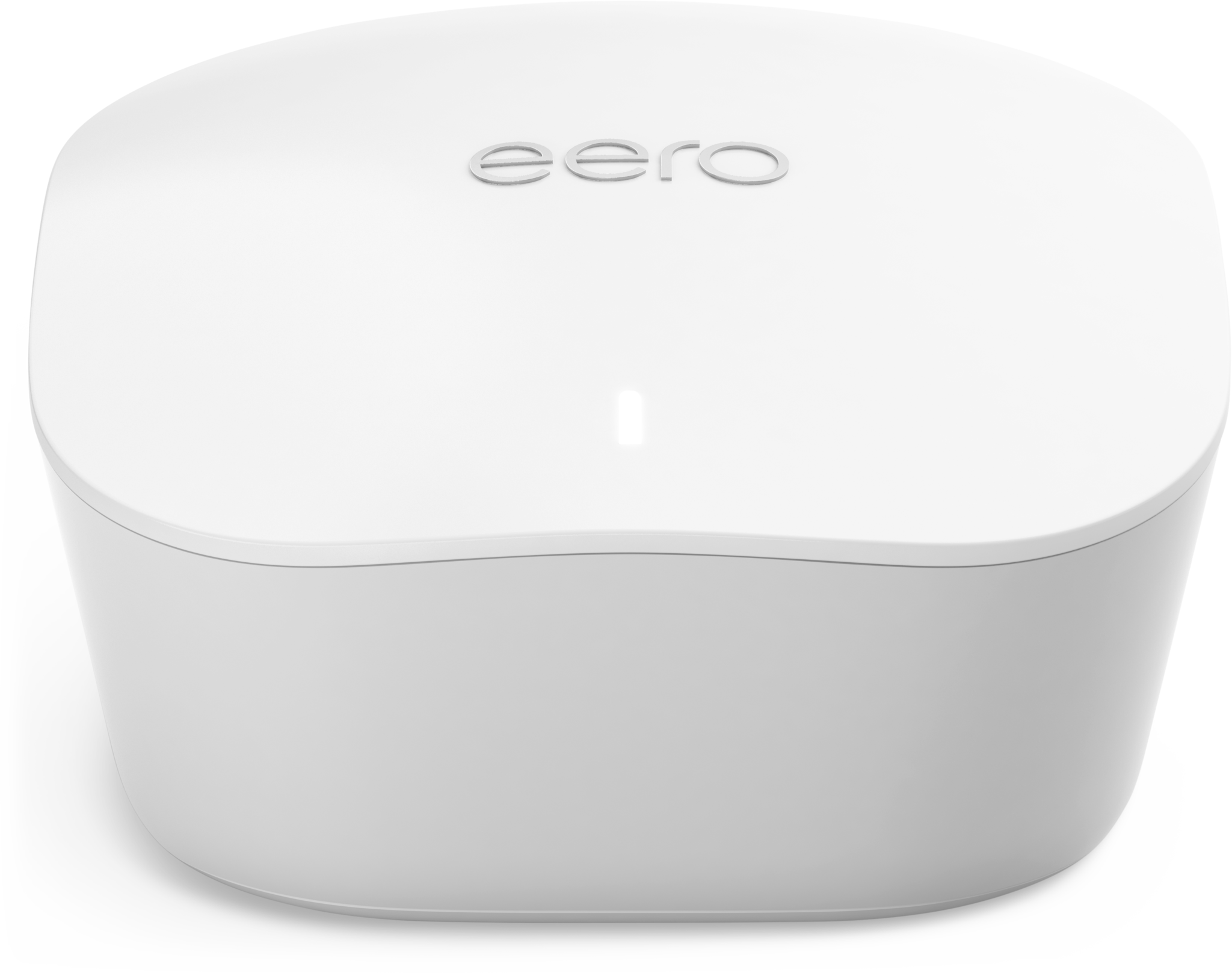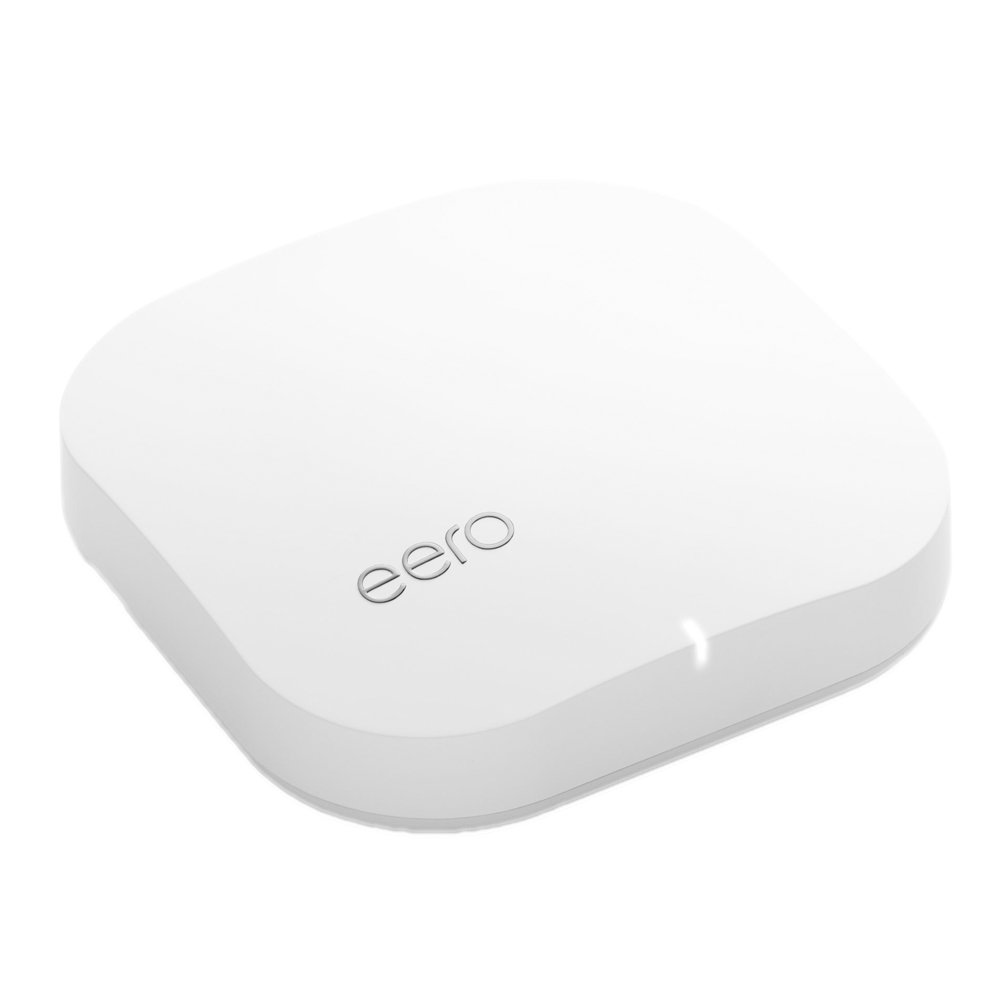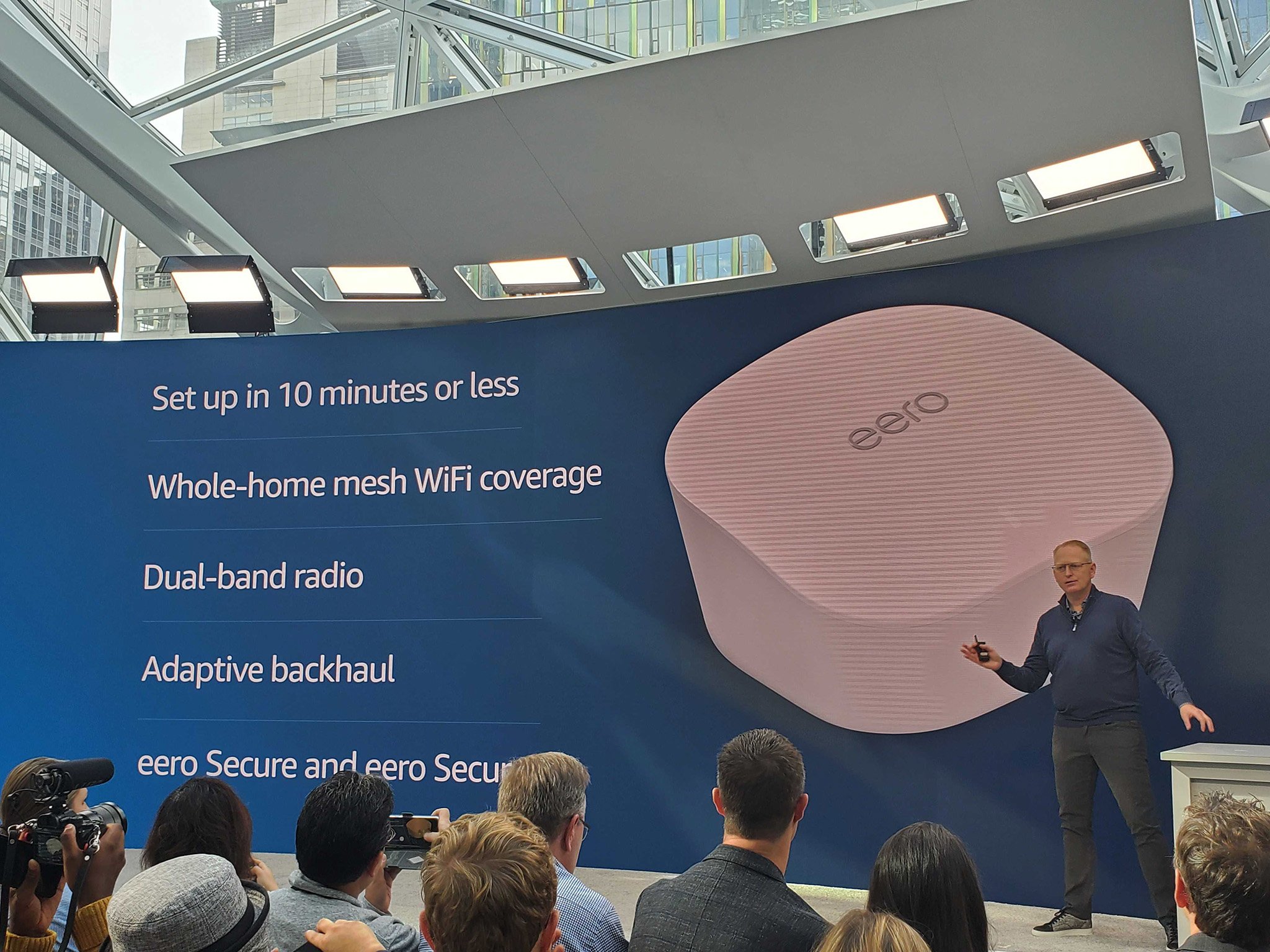Adaptable and affordable
Eero Mesh
Pros
- Two Ethernet ports
- Alexa support
- 2x2 MU-MIMO
- Beamforming
- More affordable
Cons
- Dual-band
- Less coverage
This new Eero sets its target on the sub-$100 mesh router category. It stays focused on simplicity, beauty, and ease of use with great software and support for Amazon's Alexa assistant. This is a great start or expansion to an Eero mesh network.
Speed and power
Eero Pro
Pros
- Tri-band
- Two Ethernet ports
- Alexa support
- 2x2MU-MIMO
- Beamforming
Cons
- Expensive
- Slower than competition
The Eero Pro is more of the Eero. An extra 5.8Ghz Wi-Fi band helps achieve higher top speeds than the Eero in a slightly more compact housing. A simple flatter design will work better for many when it comes to blending in.
Technically speaking, the Eero Pro is the better product, but at double the price of the base Eero, it's not worth it for most people. With tri-band support and greater overall Wi-Fi capacity, the Pro is a good choice for people that need more than 1Gbps on their devices. Most people won't need that much internet speed. For most people, the Eero with be fast enough and the lower price leaves room for more units for better coverage.
An extra band
Comparing the specifications of these two routers shows how much they have in common. The main thing that stands out on the Pro is the tri-band Wi-Fi. This will mainly help the router keep speeds high, which helps it be consistent across multiple devices connected and active. Both routers use 2.4 and 5.2Ghz, with the Eero Pro adding in another channel at 5.8Ghz.
The standard Eero is no slouch, though. Both routers support 2x2 MU-MIMO, which can quickly manage traffic with multiple connections, as well as the same CPU and RAM figures. You can safely expect the software experience on the two devices to be very similar. This is nice since the software is one of the strongest parts of the Eero experience.
| Eero | Eero Pro | |
|---|---|---|
| Wi-Fi standard | 802.11AC | 802.11AC |
| Bands | Dual-band | Tri-band |
| LAN ports | 2 | 2 |
| Frequencies (Ghz) | 2.4 and 5.2 | 2.4, 5.2, and 5.8 |
| MU-MIMO | 2x2 | 2x2 |
| Dimensions | 98mm x 98mm x 60mm | 121mm x 121mm x 32mm |
| CPU | 700Mhz quad-core | 700Mhz quad-core |
| RAM | 512MB | 512MB |
The software
The software experience is going to be largely the same no matter which Eero device you have. You absolutely need access to an Android or iOS device to set up and configure your Eero network. Make sure to grab the app on the Google Play Store or iOS App Store before you disconnect your old equipment.
Internally, the Eero routers will update themselves when new software is available, so you shouldn't need to worry about that aspect. As you would expect from an Amazon product, both of the Eero routers are Alexa compatible. Even the older Eeros can use Alexa.
Expansion
One nice thing about being part of the Eero ecosystem is that all of the Eero devices will be compatible with each other. If you want, you could buy both of these products and use them together. If you're looking at these devices for expansion, it's a good idea to put the most powerful device at the center connected to your modem. Your entire network will only ever be as good as the main router.
If you intend to upgrade an older model Eero or the current Eero to the Pro, keep in mind that the benefits will only be apparent when you are closest to the main router. If you want to simply add range, the Eero will be the best way to do so since it provides the same specifications as the Eero Beacon at a lower price.
Both the Eero and the Eero Pro have two gigabit RJ45 Ethernet ports as well. Keeping your wired devices connected will be easier than ever since you can just plug into the nearest router.
The housing
Lastly, the new Eero has a slightly smaller physical footprint than the Eero Pro, though the increased depth makes the total volume larger. Both Eero products are small enough to conceal nearly anywhere but with decreased length and width of the Eero, hiding it should be even easier.
What should you get?
For the needs of most consumers, the standard Eero with be the better fit. While the Eero Pro will be able to handle more devices, unless you have a full house with data hungry users, the standard Eero should be plenty.
If you are building a mesh to solve a speed and capacity problem, the Eero Pro is the better move but if you want Wi-Fi that's good enough for pretty much any standard usage, from streaming to gaming, the standard Eero is a better value. Plus you can get more units to further improve coverage for the same budget.
Adaptable and affordable
Eero
Good enough for most people
Eero is a great expansion option to your existing Eero mesh network or a good base for a new mesh. Dual-band Wi-Fi and Mu-MIMO keeps the mesh network fast.
Speed and power
Eero Pro
You have a lot of devices that need more speed
The Eero Pro keeps things fast even with a lot of devices thanks to a tri-band connection and great software. It's also compatible with other Eero routers.




Tidak ada komentar:
Posting Komentar